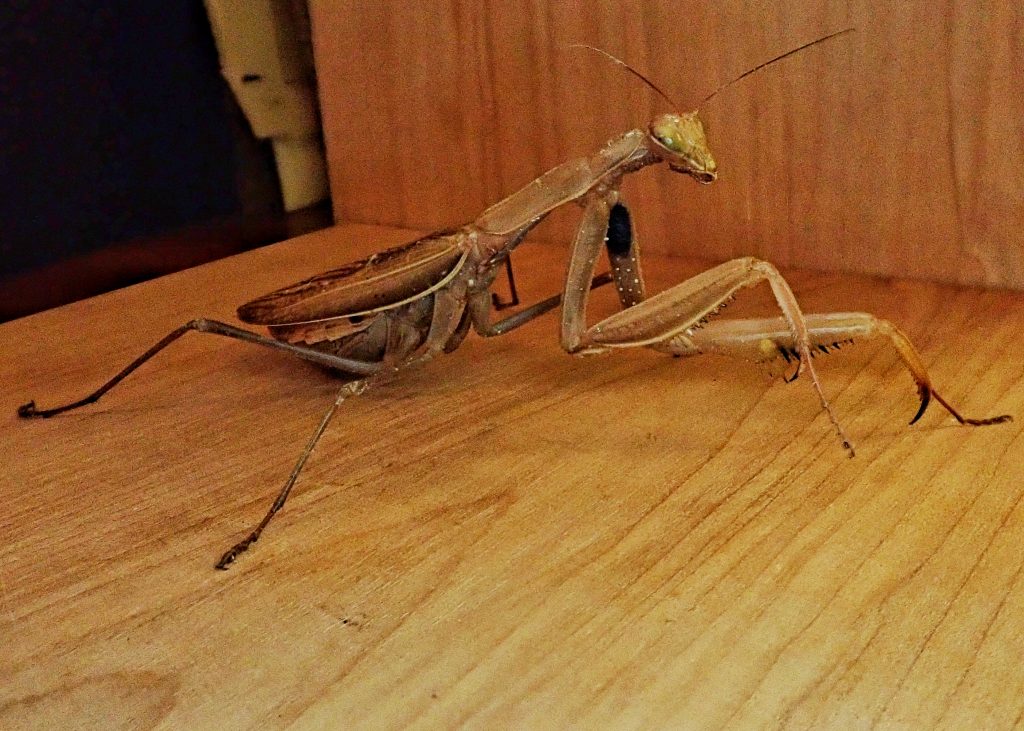
Mantis religiosa is a large insect with adults ranging in length, including wings, from 47mm (males) to 75mm (females). They are green to brown, with clear or very pale green hindwings, and black spots (often with a white center) on the inside of the forelegs where they join the thorax (coxa). These spots can be difficult to see unless you have the insect in hand, but they are diagnostic for this species.
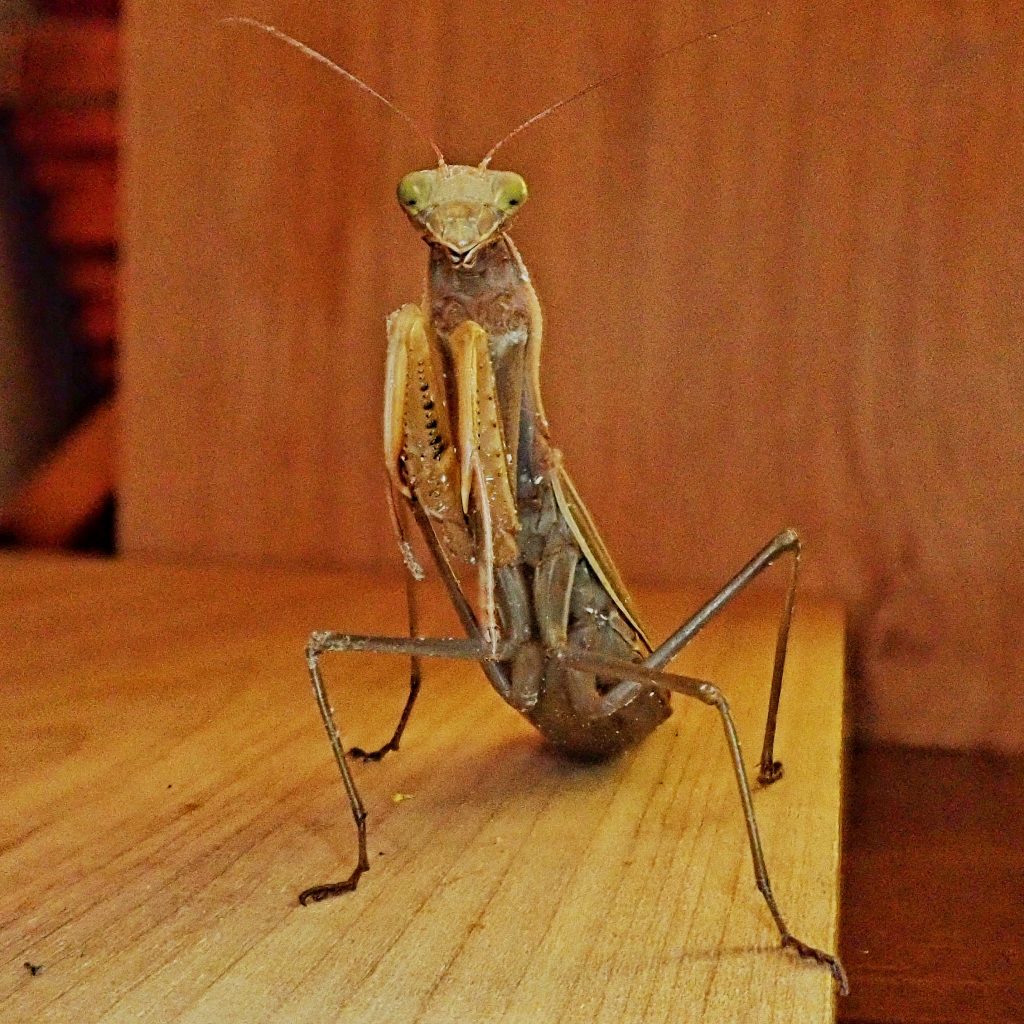
Their eyesight is good and their triangular head is unusually mobile for an insect, allowing them to track movement without moving their body, which gives them an air of intelligence that may be the basis for the order name Mantodea, from Mantis, Greek for soothsayer or prophet. The species epithet religiosa describes the forelegs being held together in what seems a prayerful fashion. The common name Praying Mantis for this species has fallen out of favor due to the fact that most Mantids hold their forelegs in a similar posture.
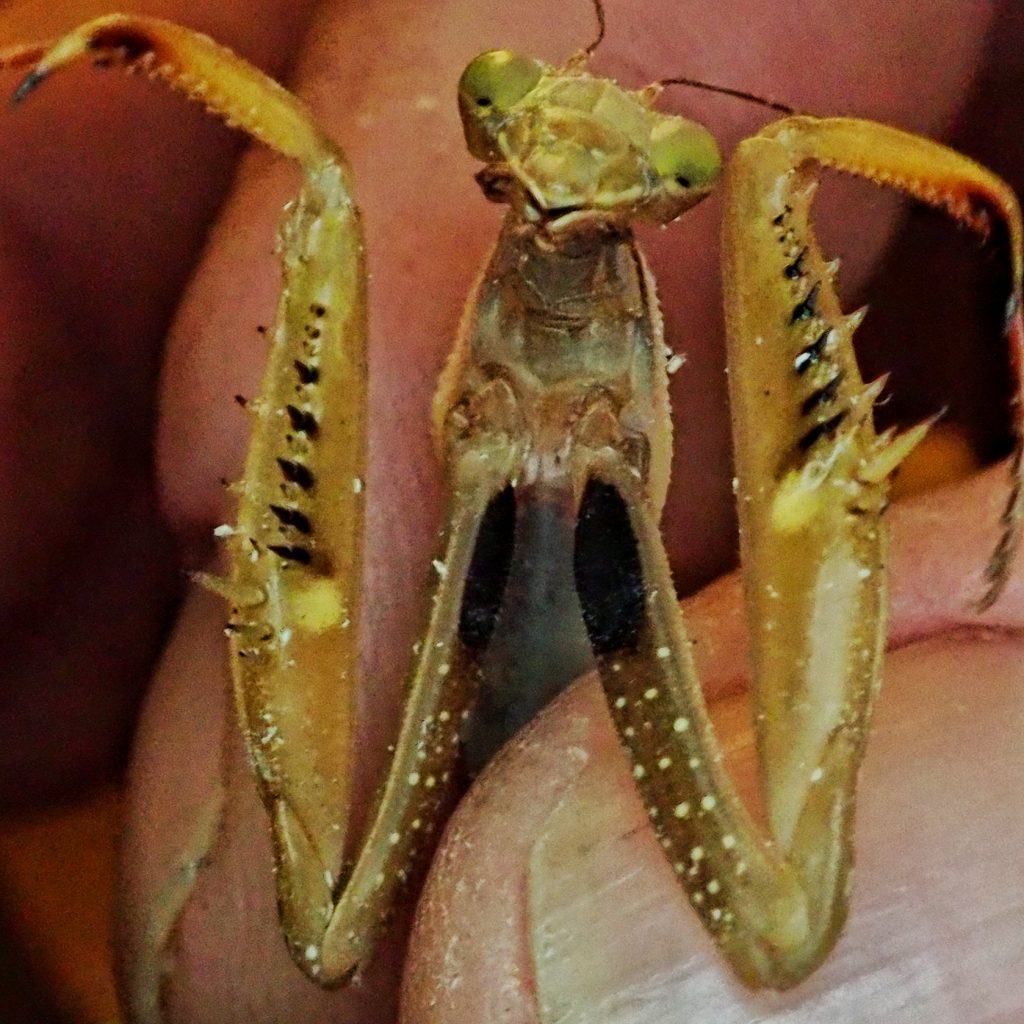
Mantids lay their eggs in styrofoam-like cases called oothecae, a strategy that they share only with the roaches (ETA- I recently discovered that some stick insects [order Phasmatodea], and several tortoise beetles, also construct oothecae), which has caused some entomologists to group them together in the order Dictyoptera. But other morphological characteristics were too disparate to justify that, and Dictyoptera is now ranked as a superorder with the mantids in the order Mantodea and the roaches and termites in the order Blattodea.
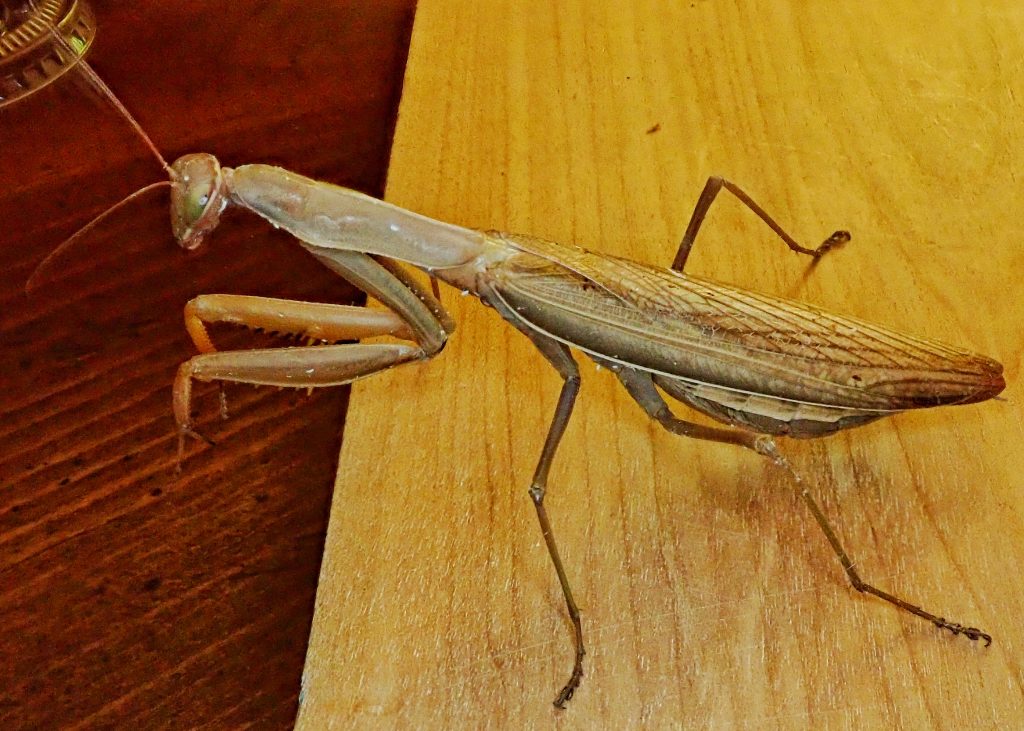
European Mantis live in open, brushy or grassy areas, and are superb ambush hunters, with fast, long, and strong forelegs capable of snatching flying insects, or even birds, out of the air. They are also well known as sexual cannibals, behavior which has been observed mostly in laboratory studies, and which seems to happen in only 30% of the mating which takes place in the wild. But they will definitely hunt other mantis, and one of the biggest reasons they are not effective as biocontrol in a garden setting is because they eat the competition.
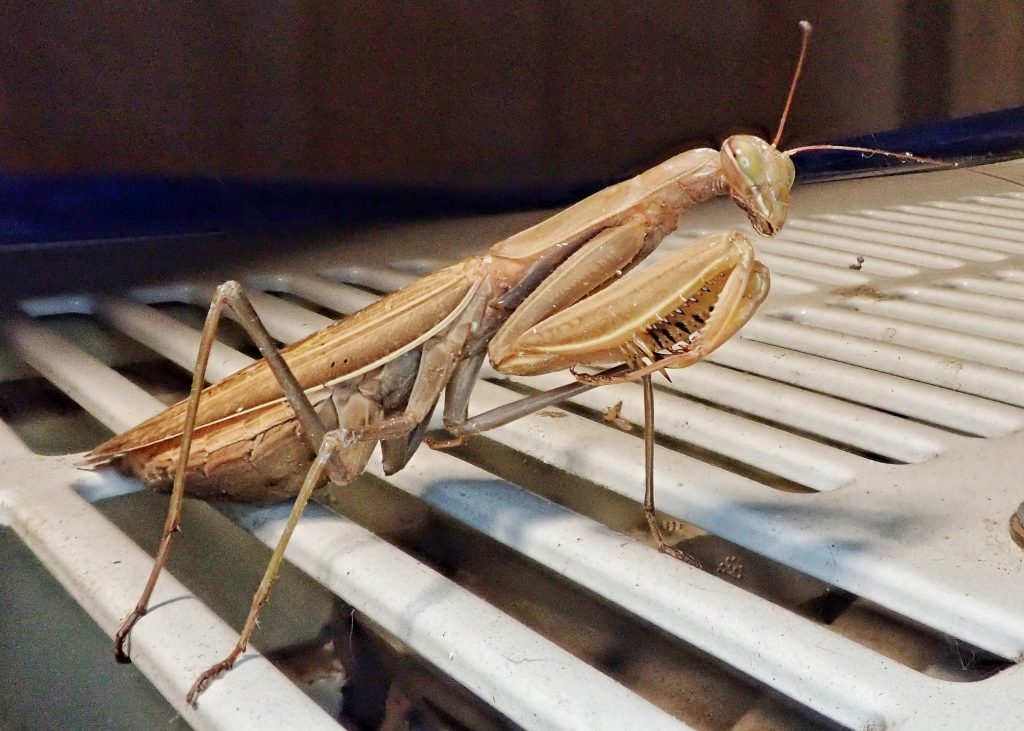
https://bugguide.net/node/view/22947
https://www.livescience.com/amp/mantis-strikes-deadly-precision-video.html
Size- Length including wings 50-75mm
Habitat- Open grassy or brushy areas
Range- Region wide
Eats- Whatever it can catch and hold onto, including birds and other mantis
Flight Season- July to November
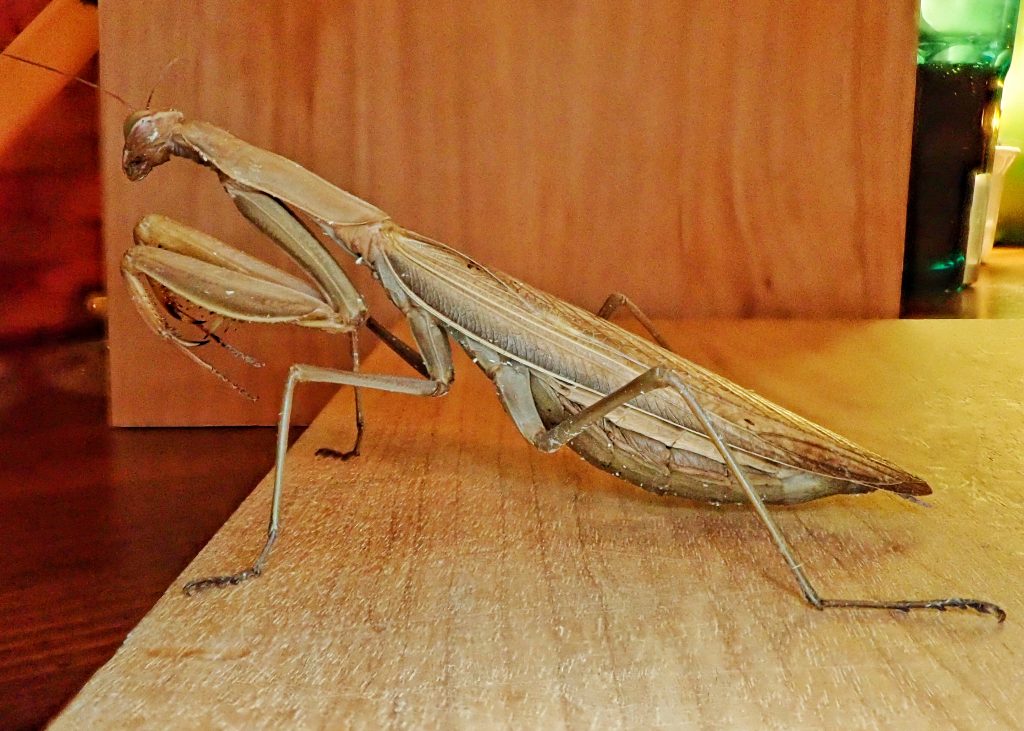
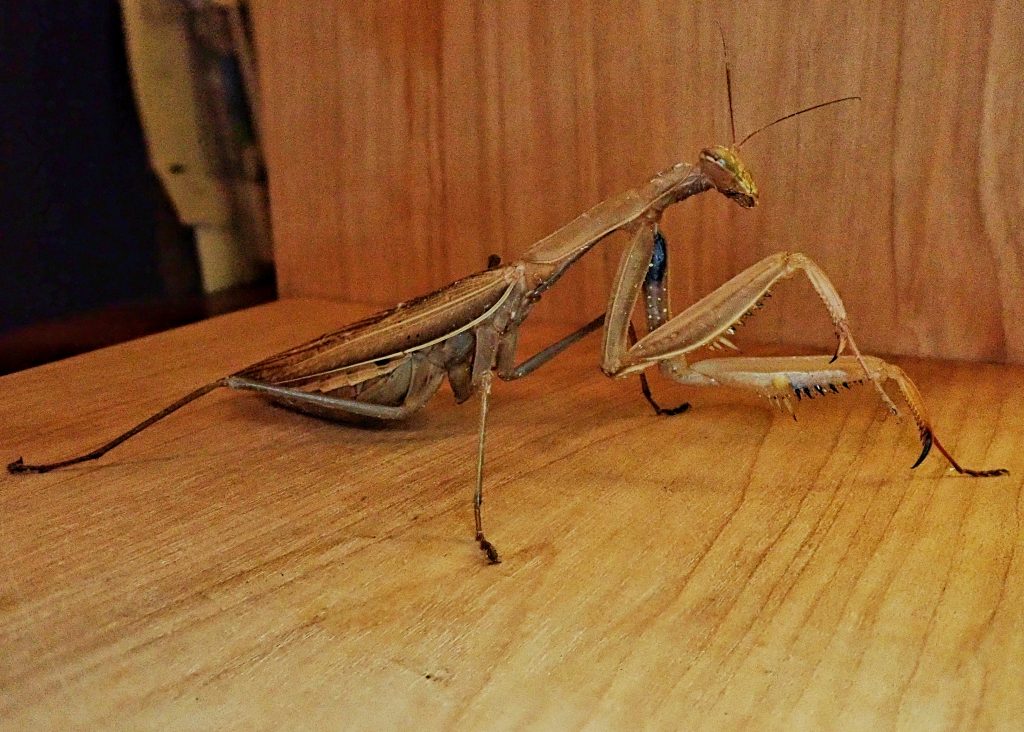
Oh my! I’ve never run across one of these in person. I recently picked up an assignment to do one of these in a hand building ceramics class… a dead leaf mantis. I researched Deroplatys lobata and the crazy camouflage employed by the mantis. These are fascinating creatures!
I know! There are all of these billions of lives out there that we only touch peripherally, if at all. Those Deroplatys you mentioned are amazing. I didn’t really know anything about them. Thanks for bringing that to my attention!